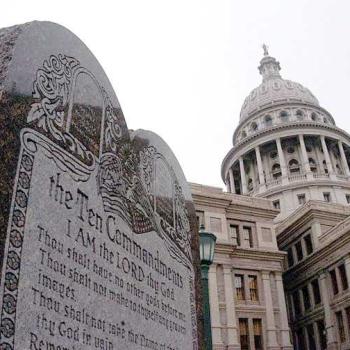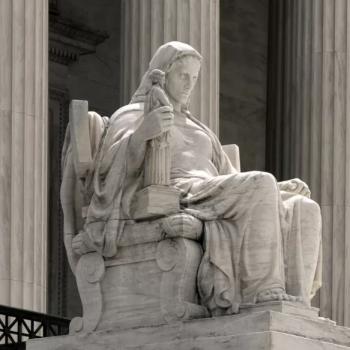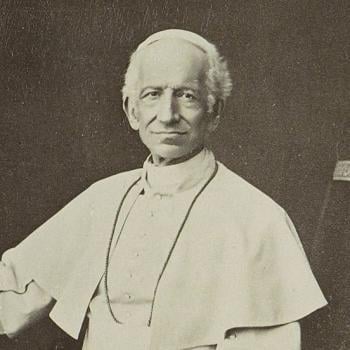The Temperance movement was one of the most long-lasting and influential religious/social activist movements in history. That’s right; the Temperance movement, which you may associate with prim old ladies breaking up saloons with axes. Temperance impacted U.S. politics for more than a century. It also was an international cause, or at least a trans-Atlantic one, with temperance organizations in Europe as well as North America. And although I speak of it in the past tense, it never completely went away.
Several Protestant denominations in the United Stated led the Temperance movement, although many Catholic clergy supported it also. Temperance was one of several social-political issues, such as women’s suffrage and the abolition of slavery, that grew out of the Second Great Awakening, a period of Protestant revivalism in the early 19th century. Among the early Temperance influencers and leaders were the Rev. Lyman Beecher, a Presbyterian clergyman and father of Harriet Beecher Stowe. The Rev. Beecher delivered and published six sermons on drunkenness in 1826 that were widely distributed in the U.S. and Europe. Beecher and another Protestant minister, the Rev. Justin Edwards, were co-founders of the American Temperance Society, also established in 1826.
Alcohol in 19th Century Life
At first, the Temperance movement advocated moderation and not prohibition. The Bible, you might remember, does not explicitly forbid alcohol. There was wine at the Last Supper, after all. But there are many warnings in both the Old and New Testament against getting drunk. And drunkenness was a big issue in early America. It’s estimated that in 1790, an American consumed an average of 5.8 gallons of alcohol every year. Today it’s more like 2.3 gallons a year, on average.
In early America, drinking alcohol was just part of everyday life. Even the famously rigid Puritans drank alcohol. A little liquor was considered healthful, even for children. Physicians often prescribed it as medicine. Even drinking alcohol while at work was common and acceptable. Keep in mind that drinking water was often contaminated with disease-causing bacteria and other nasty things in those days, so alcohol may have been safer.
In 1784 Dr. Benjamin Rush published a widely distributed tract describing harmful effects of alcohol on mind and body. For the first time people began to worry that maybe alcohol wasn’t good for you, after all. But they kept drinking. By 1830, average alcohol consumption for an American was up to 7.1 gallons a year.
Temperance as a Religious and Moral Crusade
After its beginnings in the 1820s, the Temperance movement grew more absolutist and began to talk about complete abstinence from alcohol. In this the social movement made changes to religious doctrine. It wasn’t until well into the 19th century that some Protestant denominations began to teach that drinking alcohol at all was sinful.
The Temperance movement often was indistinguishable from evangelical revivalism. At revival-style meetings the audience was urged to come forward and “take the pledge” to abstain from drinking. Abstainers took to wearing a blue ribbon badge, inspired by Numbers 15:38-39: “Speak unto the children of Israel, and bid them that they make them fringes in the borders of their garments, throughout their generations, and that they put upon the fringe of the borders a ribband of blue : and it shall be unto you for a fringe, that ye may look upon it, and remember all the commandments of the Lord, and do them.”
As time went on, women began to play larger roles in the movement. One of the most prominent of the many Temperance organizations was the Women’s Christian Temperance Union, established in 1873. (And it’s still established; here is the WCTU website.) The leaders of the WTCU believed that more could be accomplished if women had the vote, and they also began to promote women’s suffrage. There is then a direct connection between the Temperance movement and the women’s suffrage movement. So many women became active in the Temperance movement it came to be seen as a “women’s holy war.” The WCTU adopted a white ribbon badge, by the way.
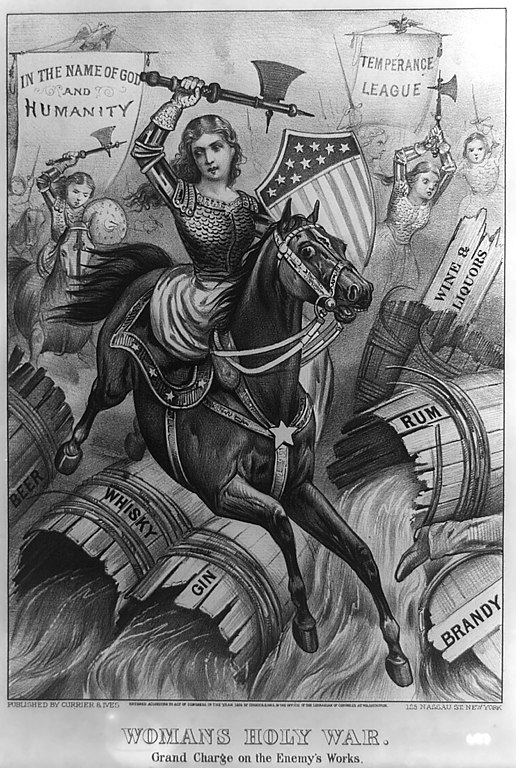
By the latter part of the 19th century much of Temperance literature focused on the damage alcohol does to families. Many tracts portrayed men spending their time and paychecks in saloons while their children went hungry. And this takes us to Carrie Nation (1846 – 1911), who remains the face of the Temperance movement to this day. Nation, also known as “Hatchet Granny,” became famous for attacking taverns with hatchets. Nation’s first husband was an alcoholic, so she had reason to have issues with liquor. During a second marriage she organized a branch of the Women’s Christian Temperance Union. She came to believe she had been called by God to stop people from drinking alcohol. Her activism escalated to breaking up the stocks of liquor in saloons with rocks. Then she graduated to hatchets. Sometimes alone, sometimes with other women, she marched into bars and saloons and smashed liquor bottles with her axe. Often she and the other women sang hymns as they were smashing.
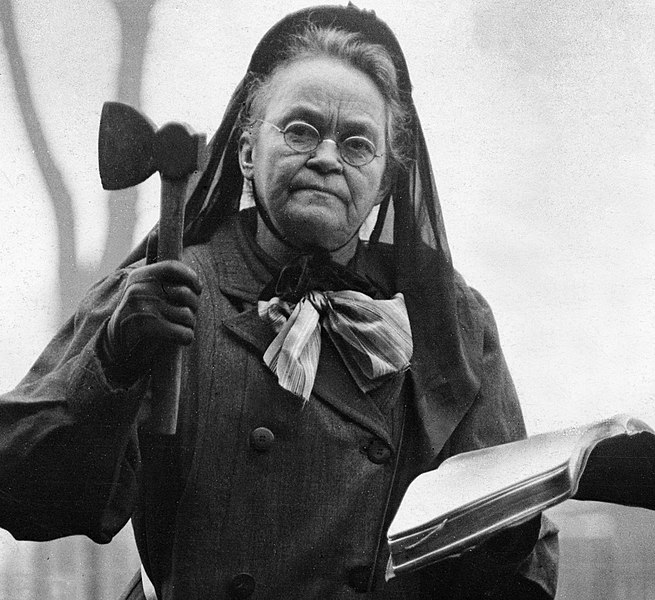
Temperance and Politics
The Temperance movement became a political force as the nation divided between the “wet” and the “dry.” Politicians “took the pledge” and wore their blue or white ribbon badges to get votes. Temperance swayed many state and local elections and eventually impacted national politics as well. Several states passed laws prohibiting alcohol, some by popular referendum, long before Prohibition went national. During World War I rationing laws prohibited using grains and other food to produce distilled spirits, and distilleries shut down. And anti-German sentiment created a backlash to beer. The troops had barely gotten home before the 18th Amendment was ratified. The Amendment banned the manufacture, sale, and transportation of alcoholic beverages in the United States. Prohibition went into effect in 1920.
The 19th Amendment, which gave women the vote, was ratified in 1920, by the way.
But Prohibition came with unintended consequences, such as a rise in organized crime and a huge loss in state tax revenue. And sometimes people want a drink. By the time the 18th Amendment was repealed in 1933, the Temperance movement had lost its clout. A magazine poll showed that only just over a quarter of respondents still supported the national ban on liquor. The Temperance movement was killed by its own success.




